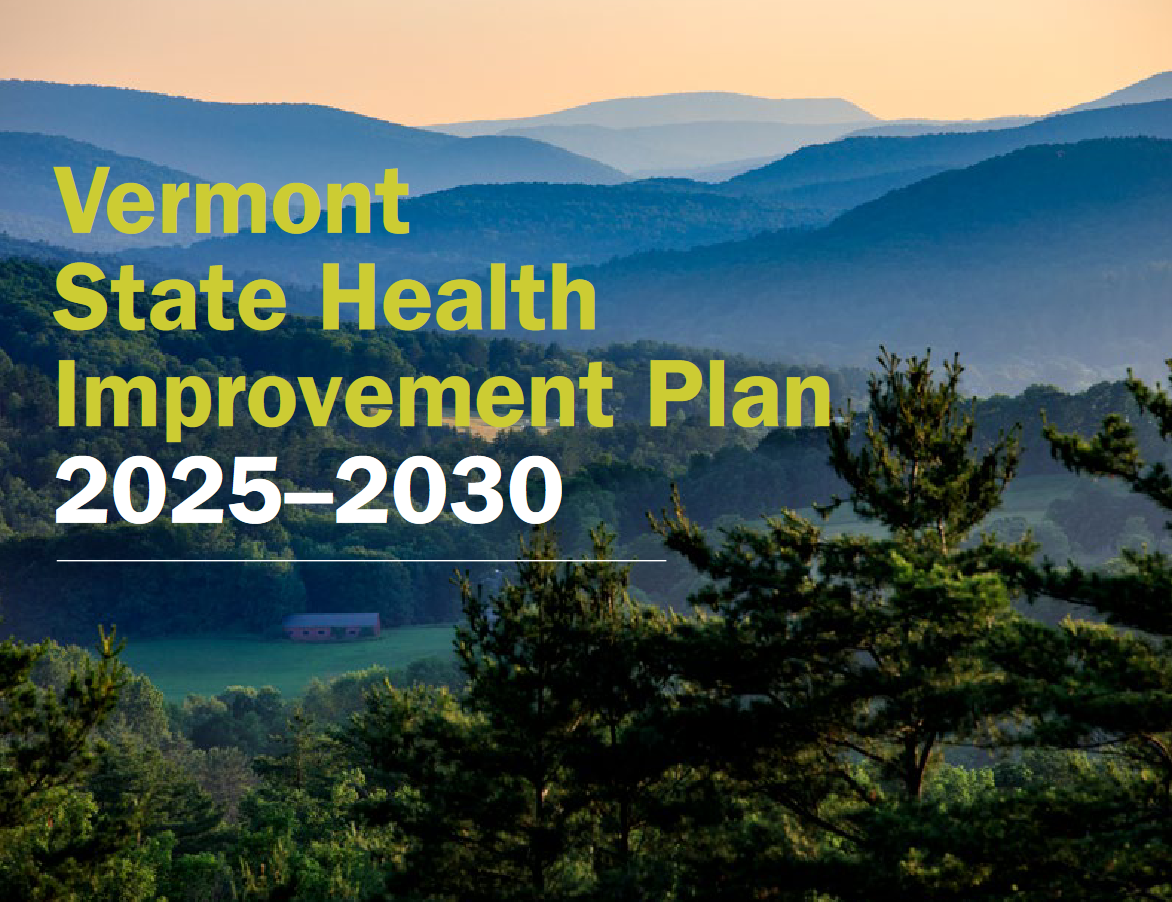The Health of People in Vermont
What do we know?
The Vermont State Health Assessment is an overview of what we know about the health of people in Vermont at a point in time. The Assessment is an analysis of quantitative and qualitative data that examines health inequities by race and ethnicity, gender, age, sexual orientation, disability, socioeconomic status and geography. The Assessment is conducted every five years.
What are we going to do about it?
Results of the State Health Assessment are used to develop the State Health Improvement Plan. The Plan outlines how the Department of Health and other state and community partners will prioritize efforts to promote health and equity in Vermont over a five-year period. It is a way for different sectors and organizations to coordinate on key issues to improve the lives of people in Vermont.
The Assessment takes data from around the state and presents it in a way that summarizes the main health issues facing Vermonters. The Plan takes that information and narrows it down to 3-5 priorities that the state will focus on for the next five years.
2024 State Health Assessment
The 2024 Assessment began with a review of publicly available data about the health and well-being of the entire state and populations experiencing disproportionate health inequities. This data was used to inform conversations with community partners and individuals with lived expertise to better understand the strengths, needs, and experiences of people in Vermont.
Findings from the State Health Assessment can be found below in three formats:
- A comprehensive report. This describes the methodology and detailed findings by health need and community of focus.
- Two-page data briefs by community. These include both quantitative and qualitative data.
- Detailed presentations by community and health need. These are entirely qualitative data, reflecting the voices of Vermonters from focus groups and interviews.
Full Report
Read the report
Learn how we conducted the State Health Assessment, who we talked to and take a deep dive into what we learned.
Data Briefs by Community
Indigenous People မြန်မာစာ/Burmese | Kirundi | Español/Spanish
Older Vermonters မြန်မာစာ/Burmese | Kirundi | Español/Spanish
People of color မြန်မာစာ/Burmese | Kirundi | Español/Spanish
People with disabilities မြန်မာစာ/Burmese | Kirundi | Español/Spanish
People who are unhoused မြန်မာစာ/Burmese | Kirundi | Español/Spanish
People who identify as LGBTQ+ မြန်မာစာ/Burmese | Kirundi | Español/Spanish
Statewide မြန်မာစာ/Burmese | Kirundi | Español/Spanish
Detailed Presentations by Community and Health Need
Community
Health Need
How to use the data
Please use this data freely! We hope that it is useful for our partners in your efforts to improve health and well-being. You can use this data to:
- Elevate the voices of people with lived experience to provide context to quantitative data.
- Understand the factors that impact health and well-being.
- Identify solutions to address some of the most important health needs facing people in Vermont.
- Inform planning and decision-making for your organization or community.
- Identify opportunities for collaboration with other organizations or sectors.
2025-2030 State Health Improvement Plan
The State Health Improvement Plan is a five-year roadmap for ensuring that all people and communities in Vermont have access to opportunities for health and well-being. It reflects the shared efforts of people and organizations across the state. It outlines what we plan to achieve, how we will achieve it, and how we will know if we have achieved it. There are four areas of focus in the SHIP: access to care; cost of living; housing; and mental health/substance use.
The strategic approach of the State Health Improvement Plan 2019-2023 is built on data in the State Health Assessment 2018, and thanks to the active engagement of individuals and partners across the state. Four broad strategies emerged during the 2018 assessment and improvement planning process to improve outcomes in six priority health and social conditions:
- Child Development
- Chronic Disease
- Mental Health
- Oral Health
- Substance Use
Social Determinants: Housing, Transportation, Food, Economic Security
Annual action plans were developed with partners, and progress was tracked on the State Health Improvement Plan Performance Scorecard
Read about the process for updating the 2018 State Health Assessment and 2019-2023 State Health Improvement Plan

